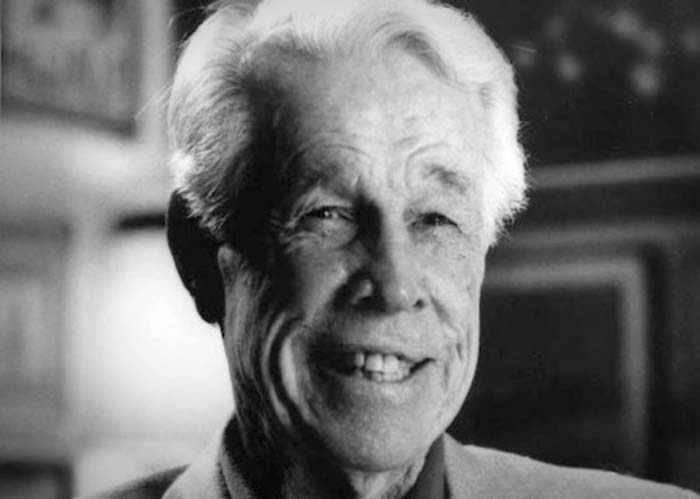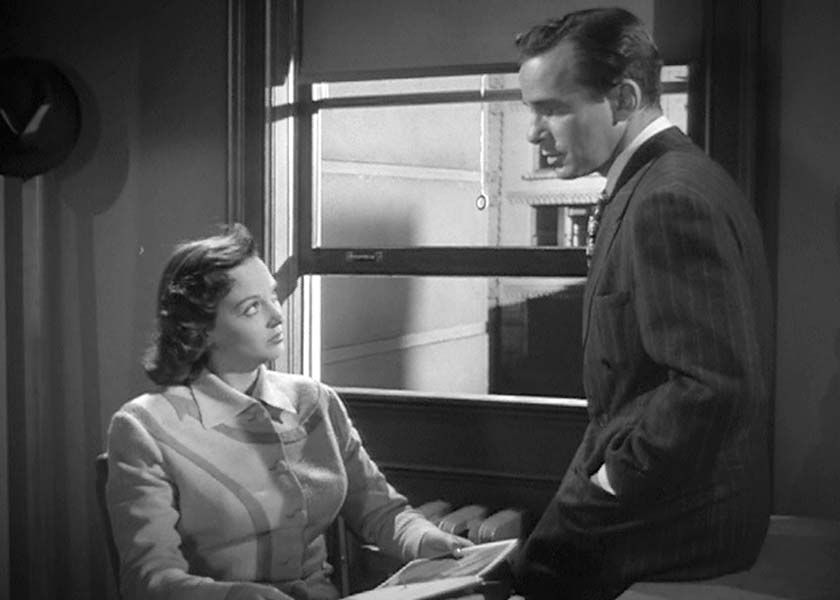Synopsis
Kathy Lawrence (Bremer), a reporter, has evidence that fugitive judge Finlay Drake (Hayes) is hiding in La Siesta Sanitarium. She hires private investigator Ross Stewart (Carlson) to pose as her mentally unbalanced husband and enter the sanitarium to search for Drake. Kathy gives Ross a picture of the judge. If he finds the fugitive, she will have an important story, and they can split the $10,000 reward offered for Drake’s capture.
Ross shares a room with two other patients who warn him about the dangerous conditions in the sanitarium. All the patients fear the sadistic attendant Larson (Fowley). The psychotic Larson beats Mr. Purvis (Trevor Bardette), Ross’s roommate, after Purvis complains about the hospital’s poor facilities.
The director of the hospital, Dr. Clifford Porter (Henry), is sheltering the
fugitive judge behind the doors of a locked ward. Ross sneaks into the ward and
sees the fugitive. Larson finds the judge’s photo among Ross’s effects. To
eliminate Ross without killing him themselves, Porter and Larson lock him in the
padded room of a demented former prizefighter, Butcher Blackmor (Tor Johnson), who
goes into a prizefighting posture at the sound of a bell and will mercilessly
pummel anyone near him. After being severely beaten, Stewart lies still. When
Kathy arrives to visit her husband
, she is turned away and not allowed to
see him.
Kathy, determined to find out what has happened to Ross, enters the sanitarium disguised as the girlfriend of the judge. She holds a gun on the judge and has Ross brought to her. Kathy and Ross are attempting to escape as the deranged boxer attacks Larson. During these events, an honest attendant has called the sheriff who arrives in time to arrest Judge Drake, Dr. Porter, and Larson. Kathy phones in her story. She and Ross embrace.
Discussion
This suspenseful, tightly plotted film moves rapidly through its short 62-minute run-time. Although the central premise with the criminal judge and the poorly run sanitarium with its sadistic attendant is melodramatic and contrived, the plight of the hero engages the viewer’s attention and concern. The audience is served up the satisfaction of a rough justice administered to the sadistic Larson. Bremer is pretty but bland and lacking in expressiveness. Carlson, on the other hand, is a lively and attractive leading man. Fowley has no trouble putting across his character’s heartless sadism.
Sanitariums have frequently provided tense settings that evoke feelings of uncertainty and fear in the protagonists and the viewers. Suspense proceeds from the setting: long, darkened halls, lurking attendants, and rows of locked doors that may conceal the secrets of unstable and drugged patients. Within the guarded walls, guilty people may be hidden or individuals who know too much may be locked away. A few films, such as Private Worlds (1935) or The Snake Pit (1948) focus on the medical aspects of a sanitarium as a treatment center. A suspense film generally utilizes the institution, with its overtones of madness, as a setting harboring closely held secrets and unknown dangers. Classic films with sanitarium scenes that increase the tension include The Uninvited (1944), Spellbound (1945), Somewhere In the Night (1946), The Secret Life of Walter Mitty (1947), and Shock Corridor (1963). Producers of more recent films, such as The Silence of the Lambs (1991) and Shutter Island (2010), find that the elements of madness and fear evoked by a sanitarium still resonate with audiences.

Behind Locked Doors was the final film in Lucille Bremer’s brief five year career, from 1944 to 1948, in which she appeared in eight feature films. Bremer, a pretty redhead, started her career as a Rockette, a dancer with the famed troupe of Radio City Music Hall, New York. Arthur Freed, producer at MGM, recruited her to the studio. She debuted as Judy Garland’s older sister in Meet Me in St. Louis (1944). She danced with Fred Astaire in Yolanda and the Thief (1945) and Ziegfeld Follies (1945) and had a substantial role in Till the Clouds Roll By (1946). However, Bremer lacked a strong screen personality, and after these few top-level films, her career declined rapidly. By 1947, Bremer was appearing in low-budget pictures. She has a nice role as Sidney Greenstreet's duplicitous wife in Edgar G. Ulmer's Reckless (1947) and a supporting part in Dark Delusion (1947), one of the Dr. Gillespie series that starred Lionel Barrymore. In 1947, she played the romantic interest in The Adventures of Casanova, filmed entirely in Mexico City. While in Mexico she met Abelardo Rodriguez, the son of a former president of Mexico; they married in 1948, and Bremer retired.

After graduation from the University of Minnesota, Richard Carlson pursued a career in entertainment. He founded a repertory theater in St. Paul, Minnesota, for which he wrote, acted, and directed. In 1937, Carlson moved to New York City where he appeared in four plays on Broadway. After a year in New York, Carlson relocated to Hollywood. In his earliest films, for example The Little Foxes (1941), starring Bette Davis, White Cargo (1942), starring Hedy Lamar, A Stranger in Town (1943), starring Frank Morgan, the youthful Carlson often played naive young men. Carlson later starred in several of the finest science fiction films of the 1950s: the well-known and deservedly acclaimed It Came from Outer Space (1953) and Creature from the Black Lagoon (1954), and the lesser known, but extremely interesting, The Maze (1953) and The Magnetic Monster (1953). By the mid-1950s, Carlson’s film career had peaked, and he turned to television, which offered him writing and directing opportunities in addition to acting. From 1955 to 1975, Carlson appeared in episodes of more than thirty TV series, and wrote scripts and directed episodes of many more. Carlson’s best known television work is his series, I Led Three Lives, which ran for 117 episodes from 1953 to 1956, in which he played Herbert A. Philbrick, an FBI undercover agent embedded in a communist cell in Boston. The show epitomizes the 1950s focus on communist influence in the US. The program advertised that its scripts were based on fact and had been approved by the FBI. Carlson stated that the program was truthful, timely, and even provided a public service.

After finishing his schooling, Oscar Boetticher traveled around the US and Mexico,
where his fascination with bullfighting would influence his film career. In
Hollywood, Boetticher visited a school pal, Hal Roach, Jr., son of the head of Hal
Roach Studios. Roach got Boetticher a few jobs as a production assistant.
Attracted to a career in the movies, Boetticher took a position as a studio
messenger. Boetthicer's career advanced rapidly, and he directed his first film,
One Mysterious Night, in 1944. He directed several low budget films,
including Behind Locked Doors, for Columbia Pictures, Monogram
Studios, and Eagle-Lion. His first major film,
Bullfighter and the Lady (1951) was produced by John Wayne, who
nicknamed him Budd
, the name Boetticher was to use for all his subsequent
credits. After Bullfighter, Boetticher made a dozen action films for
Universal-International, including Red Ball Express (1952) and
Wings of the Hawk (1953).
Boetticher is best known for directing seven classic westerns starring Randolph Scott, including Seven Men from Now, The Tall T, and Ride Lonesome. These films, made in the late 1950s, were produced by Columbia Pictures and the Ranown Picture Corporation, the production company headed by Scott and Harry Joe Brown. The excellence of these films has earned Boetticher wide recognition among film critics as one of the finest Western directors, in company with such greats as John Ford, William Wellman, and Anthony Mann. Although a quickly made film on a small budget, Behind Locked Doors contains many qualities of Boetticher's best work: austere visual style, compact storytelling, and great dramatic intensity.
In the early 1960s, Boetticher went to Mexico to make a long-planned documentary on prominent bullfighter Carlos Arruza. The project, which took seven years to complete, met with great misfortune. Shortly after arriving in Mexico, he separated from his wife, actress Debra Paget. After years of work on the film, Boetticher, drinking heavily and near bankruptcy, had a nervous breakdown and spent time in jail and in a mental institution. In 1966, Arruza and some members of the film crew were killed in an auto accident. Boetticher finally released the film, Arruza, in 1972. By 1967, Boetticher’s film career had collapsed. He completed only two more films. In the late 1960s he partnered with Audie Murphy in a short lived production company, Fipco. Before Murphy’s death in 1971, they had made only one film, A Time for Dying (1969). In 1985, he made a final film, My Kingdom For…, a documentary about Portuguese bullfighting horses. Boetticher raised and trained these horses on his California ranch.
Behind Locked Doors was produced through Eagle-Lion Studios, founded by Robert R. Young and J. Arthur Rank in 1946. Young, the owner of Producers Releasing Corporation (PRC), a low-budget studio based in Los Angeles, wanted to create a new film company producing prestigious pictures. Rank, a major producer in England, famous for his work with Michael Powell and Emeric Pressburger, wanted to break into the US market. The Eagle-Lion studios were housed in the PRC facilities. During its short existence from 1946 to 1951, the studio released some notable films, especially in the noir genre, including the Anthony Mann films T-Men (1947), Raw Deal (1948), and He Walked By Night (1948). Despite these successful and profitable films, the company suffered financial losses. The recession in the movie business at the beginning of the television era affected profitability. By 1950, the studio was in severe financial difficulties, and Young’s agreement with Rank was terminated. The studio lot was sold in 1951.

